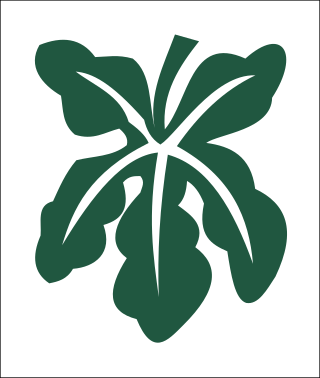
III Corps was an army corps of the British Army formed in both the First World War and the Second World War.

The Commander-in-Chief of the Forces, later Commander-in-Chief, British Army, or just the Commander-in-Chief (C-in-C), was (intermittently) the professional head of the English Army from 1660 to 1707 and of the British Army from 1707 until 1904. In 1904 the office was replaced with the creation of the Army Council and the appointment of Chief of the General Staff.

The Battle of Bladensburg, also known as the Bladensburg Races, took place during the Chesapeake Campaign, part of the War of 1812, on 24 August 1814, at Bladensburg, Maryland, 8.6 miles (13.8 km) northeast of Washington, D.C.

The Battle of Fort Ontario was a partially successful British raid on Fort Ontario and the village of Oswego, New York on May 6, 1814 during the War of 1812.

The Hertfordshire Yeomanry was a Yeomanry Cavalry regiment of the British Army that could trace its formation to the late 18th century. First seeing mounted service in the Second Boer War and World War I, it subsequently converted to artillery. Three regiments saw service in World War II, one of which was captured at the fall of Singapore. It continued through various postwar amalgamations and its lineage was maintained by 201 Battery, 100th (Yeomanry) Regiment Royal Artillery until that unit was placed in suspended animation in 2014.

Northern Command was a Home Command of the British Army from 1793 to 1889 and from 1905 to 1972.

General Sir Fortescue Graham was a senior Royal Marines officer, serving for 62 years and seeing active service in the Napoleonic, Peninsular, and War of 1812, and later in Spain, China, and the Baltic campaign 1854.
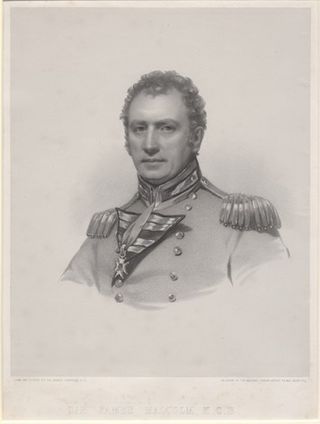
Lieutenant-Colonel Sir James Malcolm, KCB was a Scottish officer of the British Royal Marines who served in the American Revolutionary War, in the Napoleonic Wars, and with noteworthy distinction in the Americas during the War of 1812.
Lieutenant General George Lewis CB was a career officer in the Royal Marines, active during the Napoleonic Wars and the War of 1812. He rose to the rank of lieutenant general and served as Colonel Commandant of the Royal Marines, Portsmouth Division.

General Sir Richard Chambré Hayes Taylor was a senior British Army officer who served in the Second Anglo-Burmese War, the Crimean War and the Indian Mutiny. Joining the General Staff in 1860, he was the British Army's Inspector General of Recruiting, then Deputy Adjutant-General to the Forces, briefly Adjutant-General, and finally for three years Governor of the Royal Military College, Sandhurst. He was also Colonel of the Queen's Own Cameron Highlanders and the East Surrey Regiment.
Paul Harris Nicolas was a nineteenth-century British historian, an accomplished, if little known, water colourist, a Royal Marines officer, and a veteran of the Battle of Trafalgar. Nicolas was the author of the two volume Historical Record of the Royal Marine Forces.
Major General John Robyns, was a senior officer of the Royal Marines who served during the French Revolutionary Wars and earned historically noteworthy military distinctions on the North America and West Indies Station during the Napoleonic Wars and the War of 1812. As a battalion commander of Royal Marines, Captain John Robyns faced enemy forces which included his counterparts of the United States Marines at Bladensburg, Washington, Baltimore, and New Orleans. In his later years Robyns served one term as Mayor of Penzance (1840–41) in his native Cornwall.
General Thomas Adams Parke, was a career officer in the Royal Marines. Associated with the Royal Marine Artillery (RMA) of the nineteenth century Royal Marines; he was for many years commandant of that corps. Toward the end of his long and distinguished service, he led the Woolwich Division of the Royal Marines as Colonel Commandant.
The North Devon Militia, later the Devon Artillery Militia, was a part-time military unit in the maritime county of Devonshire in the West of England. The Militia had always been important in the county, which was vulnerable to invasion, and from its formal creation in 1758 the regiment served in home defence in all Britain's major wars until 1909. Having always been an infantry regiment, the North Devon Militia was converted into an artillery unit in 1853, with a role in manning the forts that protected the vital naval base at Plymouth.
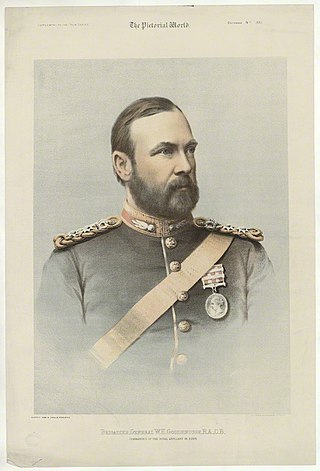
Lieutenant-General Sir William Howley Goodenough was a British Army officer who became General Officer Commanding North-West District.
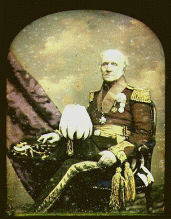
Lt-General Sir Henry Goldfinch was an officer in the Royal Engineers who served during the Peninsular War of 1807 to 1814, ending his career as one of the colonels commandant of the Corps of Royal Engineers. He was appointed a Companion of the Order of the Bath (CB) in 1815 and a Knight Commander of the Order of the Bath (KCB) in 1852.
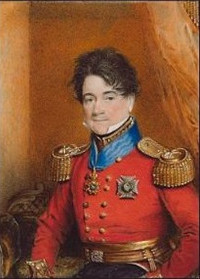
General Sir Thomas Hawker KCH was a British Army cavalry officer. Hawker began his career in the 11th Light Dragoons in 1795 and fought with them during the 1799 Anglo-Russian invasion of Holland. In 1804, he purchased the rank of major with the 20th Light Dragoons and served with them in Spain during the Peninsular War. He was promoted to command of the regiment in 1808. Hawker served in the force sent to occupy the Republic of Genoa in 1814 and shortly after was promoted to colonel and given command of a light cavalry brigade. Spending some time on half pay after the end of the Napoleonic Wars he returned to active service as lieutenant-colonel of the 13th Light Dragoons. Hawker was in the East Indies between 1822--26 and 1830-36 and was promoted to major-general in 1825. He was appointed a Knight Commander of the Royal Guelphic Order in 1837 and colonel of the 6th Regiment of Dragoon Guards in 1839. Hawker was promoted to the brevet rank of general in 1854.
Brigadier-General Henry Hendley Bond was an Irish first-class cricketer and British Army general. He came from a military family – his father was Major-General Henry Bond – and attended the Royal Military Academy, Woolwich. He was commissioned as an officer in the Royal Artillery and served in India, England, Ireland and during the Second Boer War. During his time in India he played first-class cricket for the Europeans cricket team. He was later a gunnery instructor and a champion racquets player.

The following units of the British Armed Forces participated in the Battle of New Orleans on 8 January 1815. The American order of battle is shown separately.
The Fifeshire Militia was an auxiliary regiment raised in Fifeshire, Scotland, in 1798. It served in home defence during the Napoleonic Wars and again during the Crimean War when it was converted into an artillery unit as the Fifeshire Artillery Militia. It served in home defence again during the Indian Mutiny and the Second Boer War. It was disbanded in 1909.












